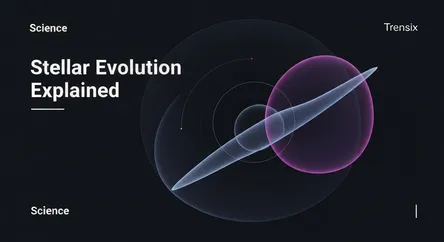Science
Stellar Evolution Explained

Explore the incredible life cycle of stars, from their birth in nebulae to their spectacular deaths as supernovae, white dwarfs, or black holes.
What is it?
Stellar evolution describes the process of a star's life, from its formation to its eventual demise. Stars are born from vast, cold clouds of gas and dust known as nebulae. Gravity causes these clouds to collapse, forming a hot, dense core called a protostar. Once the core is hot enough for nuclear fusion to begin, a star is born. It enters its longest phase, the main sequence, where it fuses hydrogen into helium, like our Sun. A star's ultimate fate is determined by its mass. Smaller stars like the Sun eventually swell into red giants before shedding their outer layers to become a white dwarf. Massive stars live shorter, more dramatic lives, ending in a cataclysmic supernova explosion, leaving behind a neutron star or a black hole.
Why is it trending?
Advances in astronomy, particularly from telescopes like the James Webb Space Telescope (JWST), are bringing stellar evolution into sharp focus. JWST provides breathtaking images and data of stellar nurseries and supernova remnants, offering new insights into how stars form and die. This constant stream of discovery, from identifying the oldest stars to better understanding the mechanics of black holes, keeps the topic at the forefront of scientific news and public fascination.
How does it affect people?
Stellar evolution is fundamental to our existence. The elements that make up our planet and our bodies—carbon, oxygen, iron—were forged in the cores of massive stars and scattered across the galaxy by supernova explosions. Without this cosmic recycling process, life as we know it would not exist. Studying the life cycle of stars helps us understand not only our own origins but also the potential for life to arise elsewhere in the universe. We are, quite literally, made of stardust.